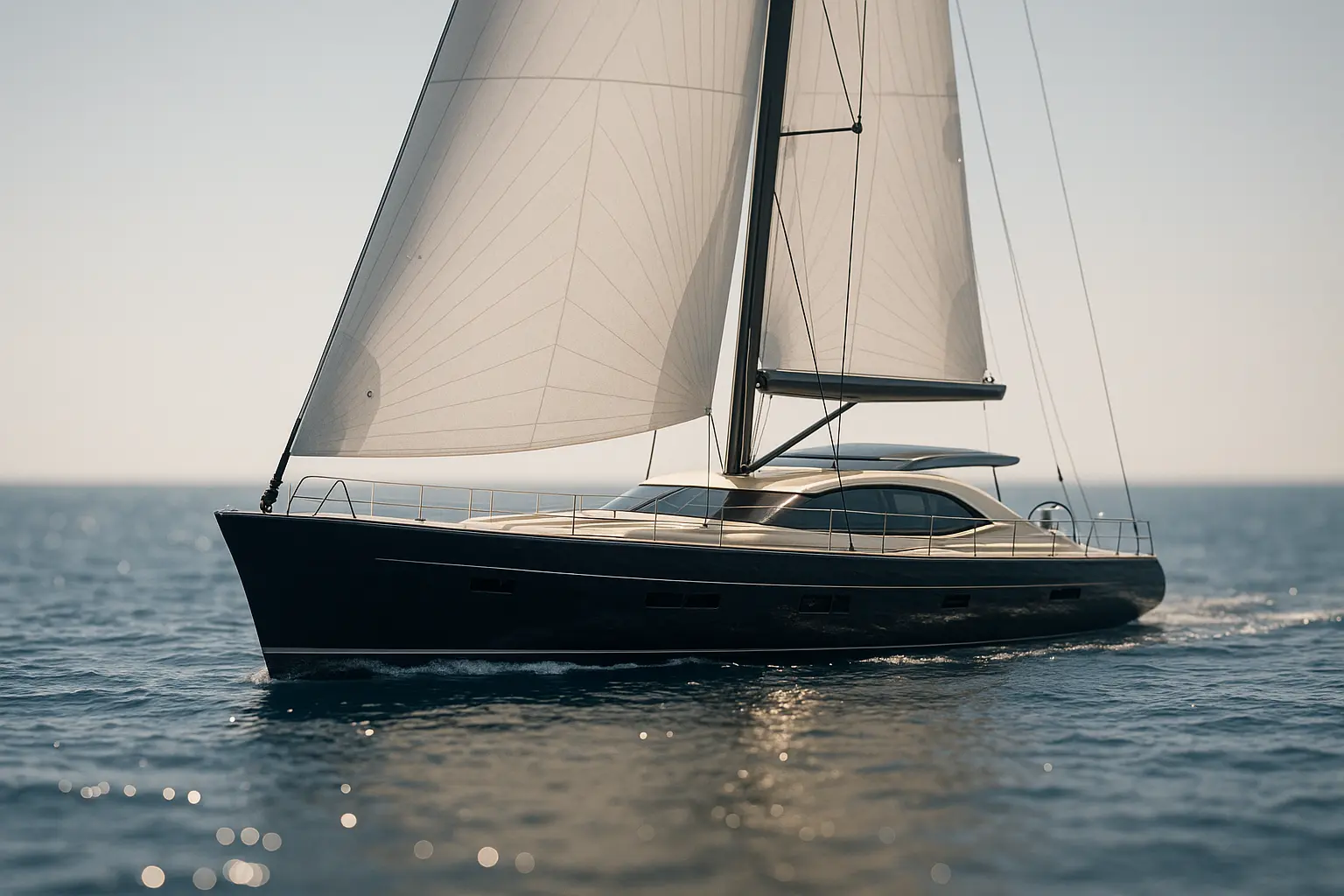Yacht design is not merely a pursuit of aesthetics and luxury; it reflects a blend of engineering, creativity, and adaptive learning. As sailors, we are constantly challenged by the ever-evolving demands of the sea. Be it cruising through serene waters or racing in high-stakes competitions, the design of our boats becomes a critical element of our maritime experience.
In today’s modern world, yacht design is undergoing a transformative shift, moving from traditional forms to more adaptive and performance-enhanced creations. A paradigmatic shift is underway, leading us toward a future where yachts are tailored to the diverse needs of users, including those with disabilities. We are now witnessing a renaissance in watercraft that caters to diverse uses, from leisurely sails to competitive racing.
As we delve into this topic, we aim to enlighten you on how yacht design has evolved and adapted to serve multiple purposes. Our exploration will navigate through facets of design that enhance sport performance, consider accessibility challenges, and redefine the sailing experience for all.
Navigating the Waters: The Shift in Yacht Design
In recent years, yacht designs have witnessed an evolution from utilitarian vessels to bespoke pieces of artistry and technology. The impetus behind these changes is as diverse as the sea itself, driven by both competitive racing demands and the leisurely pursuits of cruising enthusiasts.
The Modern Sailboat: More Than Just Aesthetic Appeal
While beauty remains a core aspect of yacht design, the modern sailboat is engineered to enhance performance. Innovations in materials and technology have allowed designers to push the boundaries of what’s possible. Carbon fiber hulls, for instance, offer lightweight durability, providing a significant edge in races.
Moreover, the synergy of hydrodynamics and aerodynamics has revolutionized boat speed and maneuverability. As sailors, we are now equipped with vessels that maximize wind potential while maintaining stability, a crucial factor for both novice and seasoned sailors.
Cruising in Style: Luxury Meets Functionality
For the cruising community, yacht design has evolved to encompass comfort and sustainability. Hybrid propulsion systems and energy-efficient designs are at the forefront, allowing you to explore the seas with minimal ecological footprint, all while enjoying the opulence that a modern yacht can offer.
Adaptive Design: Catering to Diverse Needs
In a world that champions inclusivity, adaptive yacht design ensures that sailing is accessible to all. From adjustable seating to easy-access controls, these innovations support sailors with disabilities. By creating inclusive designs, the industry paves the way for a broader range of people to experience the joys of being out at sea.
Racing Yachts: The Pinnacle of Performance
Racing yachts are the epitome of human ingenuity and teamwork. These vessels are not just machines but are crafted to extract the utmost from every element of nature, including the wind, current, and waves.
The Dynamics of a Racing Yacht
In competitive sailing, every second counts. Racing yachts are meticulously designed for speed and agility. The sharp keels, streamlined hulls, and advanced rigging systems are engineered for quick response times, allowing you to adapt swiftly in the ever-changing seascape of a racecourse.
These yachts are equipped with state-of-the-art sailing technology that enables real-time data analysis. Sailors can make evidence-based decisions mid-race, optimizing strategy and execution.
Training and Adaptability
For those new to the sport or advancing their skills, racing programs are adopting adaptive learning technologies. Tailored courses offer real-time feedback on performance, providing a personalized learning experience. This adaptive approach empowers you to refine your skills and push boundaries in a competitive setting.
The Future of Yacht Racing
From monohulls to catamarans, the future of racing yachts promises even more innovation. As AI and advanced materials shape the future, you can expect to see yachts that are faster, safer, and more attuned to the nuances of racing conditions.
Accessibility and Inclusivity: Designing for All
As sailing becomes a more inclusive sport, the design of yachts has had to adapt to accommodate a broader user base. This evolution is not limited to technology but extends to the philosophy of design, ensuring that sailing is accessible to everyone, regardless of physical ability.
Breaking Down Barriers
Adaptive yacht designs prioritize accessibility, allowing sailors with disabilities to experience the thrill of being on the water. These adaptations include features such as wider gangways, adjustable seating, and assistive technology that makes handling the vessel easier.
Furthermore, the implementation of universal design principles ensures that yachts cater to all sailors, enhancing the overall experience for everyone. From novice sailors to seasoned sailors with specific needs, these designs provide greater autonomy and enjoyment.
Programs that Encourage Participation
Sailing programs are increasingly accommodating diverse participants. By offering specialized training that accounts for varying abilities, these programs foster a community where everyone can share their passion for the sea.
Toward an Inclusive Future
As we look to the future, the commitment to inclusivity will continue to shape the design of yachts. By prioritizing accessibility, the sailing community is enriched, and the sport becomes a joyous pursuit for all, fostering a sense of belonging and adventure.
Custom Creations: Tailoring Yachts to Personal Preferences
Today’s yachts are more than vessels; they are extensions of personal expression and lifestyle. With the rise of custom yacht building, sailors can now own boats that not only meet their functional needs but also reflect individual style and preferences.
The Art of Customization
Customization in yacht design has reached new heights, allowing you to select everything from hull shape and deck layout to interior design and technology integration. This bespoke approach means your yacht is a reflection of your unique tastes and requirements, ensuring that every sail is an expression of your persona.
Practicality Meets Personalization
While personalization is key, practicality remains paramount. Designers work closely with clients to ensure that the vessel is both functional and stylish. From incorporating advanced navigation systems to optimizing living spaces, the focus is on creating a yacht that performs well while offering comforts that make each journey enjoyable.
The Role of Technology
Technology plays a significant role in customization. Modern design software allows for virtual walkthroughs and 3D modeling, giving you a clear picture of the design before construction begins. This ensures that every detail is perfect, from the keel to the mast.
A New Era of Yachting
Custom yachts represent the merging of tradition and innovation, a harmonious balance that caters to the discerning sailor. As we embrace this new era, you can expect yachts that are as unique as the individuals who sail them, offering unparalleled experiences on the water.
As we set sail into the future, yacht design continues to evolve, reflecting advancements in technology, an increasing commitment to inclusivity, and a deeper understanding of sailors’ needs. Whether you are a cruiser seeking leisurely voyages or a racer chasing the thrill of competition, modern yachts are designed to enhance your experience on the water.
With a focus on adaptability and personalization, the yachts of today and tomorrow promise to provide unparalleled performance and comfort. The journey of yacht design is far from over, and we’re excited to see how these innovations will continue to redefine our interaction with the sea.
In this ever-changing landscape, the allure of the open sea remains timeless, inviting us to explore, innovate, and embrace the transformative power of sailing.
FAQ
What are the main differences between a cruising yacht and a sporty yacht?
Cruising yachts are designed for comfort and longer voyages, often featuring spacious interiors and various amenities. Sporty yachts, on the other hand, prioritize speed and performance, with streamlined hulls and enhanced navigation systems.
How does the hull design vary between cruising and sporty yachts?
Cruising yachts typically have a broader, more stable hull to ensure smooth sailing in diverse conditions, while sporty yachts boast a sleek, narrow hull to minimize resistance and maximize speed on the water.
What kind of materials are commonly used in the construction of sporty yachts?
Sporty yachts often utilize lightweight materials like carbon fiber and advanced composites to reduce weight, enhancing speed and maneuverability. These materials also contribute to the yacht’s overall durability.
How do the interior layouts differ between cruising and sporty yachts?
Cruising yachts generally offer more luxurious and spacious interiors, with multiple cabins and living areas. In contrast, sporty yachts focus on functional designs that prioritize space for gear storage and efficient movement, with fewer frills.
What advancements in technology have influenced the design of modern sporty yachts?
The integration of cutting-edge technology, such as advanced navigation systems, hydrofoil technology, and hybrid propulsion systems, have significantly influenced the design of sporty yachts, making them faster, more efficient, and eco-friendly.


